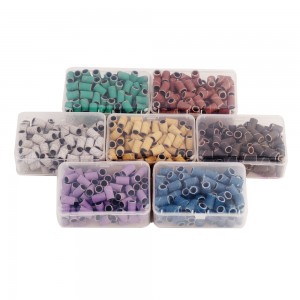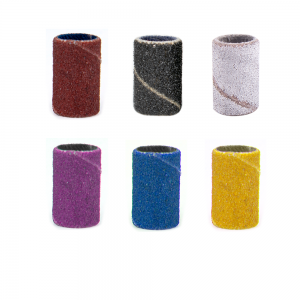Nail sanding bands are essential tools in the world of nail care and beauty. From shaping and smoothing to removing old gel polish, these small but mighty accessories play a crucial role in achieving flawless manicures and pedicures. However, not all nail sanding bands are created equal. In this article, we delve into the science behind nail sanding bands, exploring the materials used and the construction techniques that make them effective tools for nail professionals and enthusiasts alike.
 1. The Basics of Nail Sanding Bands:
1. The Basics of Nail Sanding Bands:
Nail sanding bands are cylindrical attachments that fit onto electric nail files or drills. They are designed to gently buff and shape the surface of the nails, allowing for precise and efficient nail care. These bands come in various sizes and grit levels, ranging from coarse to fine, to cater to different nail types and applications.
2. Materials Used in Nail Sanding Bands:
The effectiveness of a nail sanding band largely depends on the materials used in its construction. The most common materials include:
- Sandpaper: Traditional nail sanding bands are made of sandpaper, which is coated with abrasive particles like aluminum oxide or silicon carbide. Sandpaper bands are versatile and suitable for general nail maintenance tasks.
- Diamond: Diamond-coated nail sanding bands are known for their durability and longevity. The diamond particles embedded in the band provide superior abrasion and are ideal for shaping and refining natural and artificial nails.
3. Grit Levels and Their Applications:
Nail sanding bands are available in different grit levels, each serving a specific purpose:
- Coarse Grit: Coarse grit bands are designed for rapid material removal, making them ideal for shaping and shortening nails, as well as removing gel or acrylic overlays.
- Medium Grit: Medium grit bands are versatile and can be used for both shaping and smoothing the nails. They are suitable for refining nail edges and removing rough patches.
- Fine Grit: Fine grit bands are gentle on the nails and are perfect for buffing and polishing the nail surface. They help create a smooth and shiny finish without causing damage to the nail plate.
 4. Construction Techniques:
4. Construction Techniques:
The construction of nail sanding bands plays a significant role in their performance and durability. Bands with reinforced seams and high-quality bonding ensure stability and prevent tearing during use. Additionally, bands with well-distributed abrasive particles provide consistent and even abrasion, resulting in a uniform finish on the nails.
Conclusion:
Nail sanding bands are indispensable tools for achieving beautiful and well-groomed nails. Understanding the materials and construction techniques behind these sanding bands is essential for selecting the right tool for your nail care needs. Whether you’re a professional nail technician or a DIY enthusiast, choosing high-quality nail sanding bands with the appropriate grit level can make a significant difference in the outcome of your manicures and pedicures.
Post time: Feb-21-2024